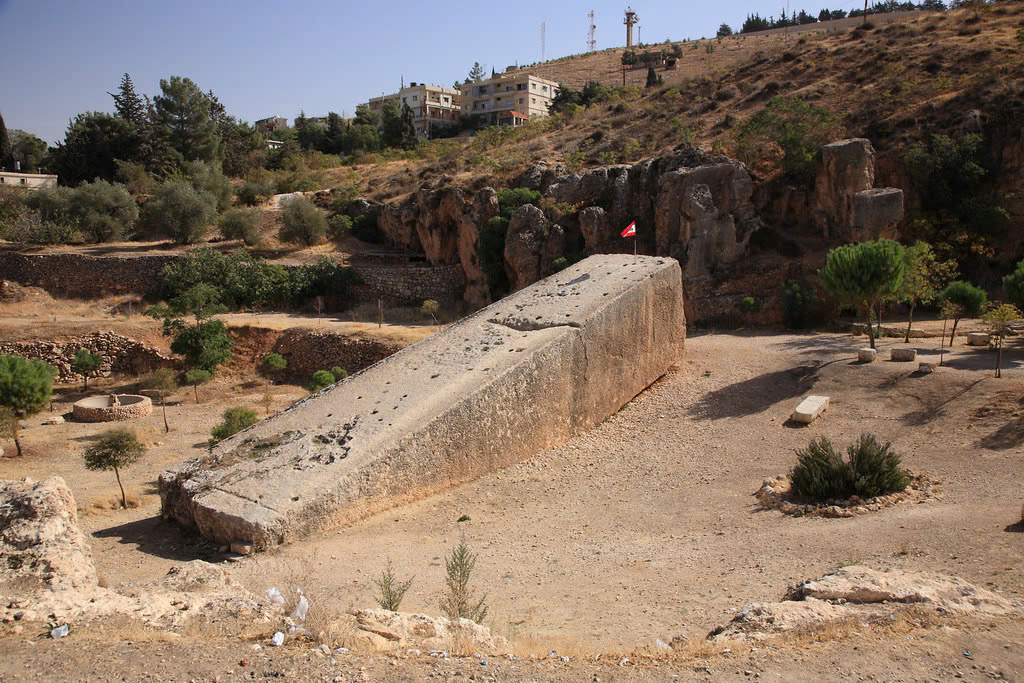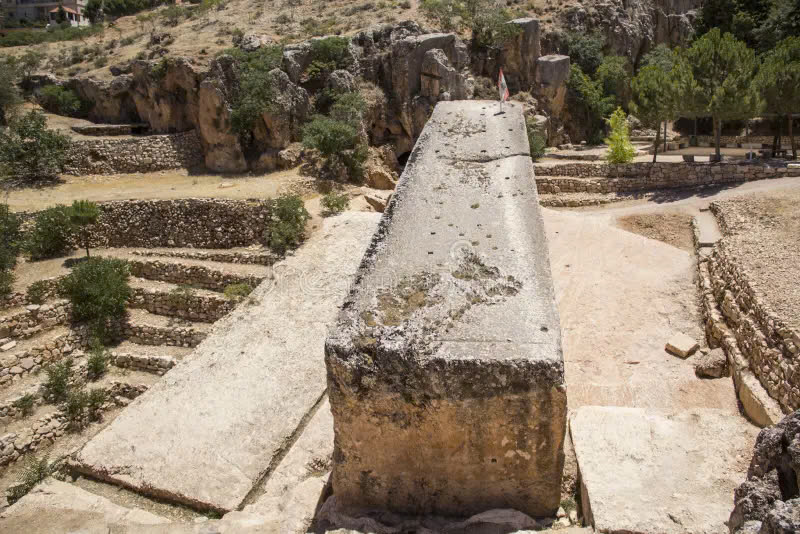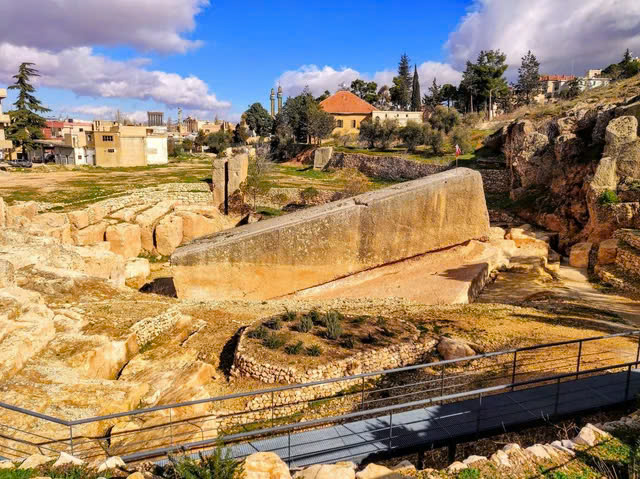A Colossal Testament to Ancient Engineering

In the heart of Lebanon lies a marvel that has captivated historians, archaeologists, and curious minds for centuries. The Stone of the Pregnant Woman, nestled in the ancient quarries of Baalbek, stands as a testament to the extraordinary capabilities of our ancestors. This monumental stone, believed to have been quarried in the first century B.C., is not just a relic of the past—it’s a window into the ingenuity and ambition of ancient civilizations.
The Monolith’s Staggering Dimensions

Measuring an astounding 21.5 meters in length, 4.8 meters in width, and 4.2 meters in height, the Stone of the Pregnant Woman is a true colossus. Weighing between 1,000 and 1,200 tons, it dwarfs most modern construction projects and leaves us questioning the methods used to extract such a massive block with ancient technology.
Legends and Lore

The stone’s intriguing name is steeped in local folklore. One tale suggests that a pregnant woman claimed she could lift the stone if properly motivated, while another speaks of a expectant mother who offered to reveal the secret of moving the monolith in exchange for an endless feast. These stories, while fanciful, reflect the awe and mystery that have surrounded this ancient wonder for generations.
Ancient Engineering: A Feat of Human Ingenuity
Unraveling Ancient Construction Techniques

The sheer size of the Stone of the Pregnant Woman raises countless questions about the capabilities of ancient engineers. Researchers believe a combination of levers, wooden rollers, and sheer manpower were employed to move such massive stones. The nearby Temple of Jupiter, featuring 800-ton trilithon blocks successfully transported nearly a kilometer, further showcases the remarkable skills of these ancient builders.
A New Discovery Deepens the Mystery
Recent excavations have unearthed an even larger stone beneath the famous monolith, estimated to weigh a staggering 1,650 tons. This discovery has reignited interest in Baalbek’s engineering legacy and deepened the mystery surrounding these colossal stones.
The Enduring Enigma of Baalbek
Theories and Speculations

The purpose of the Stone of the Pregnant Woman remains a subject of debate. Some believe it was intended for the Temple of Jupiter, possibly as part of a grand ceremonial platform. Others suggest it was abandoned due to transportation challenges or the incompletion of its intended project.
A Symbol of Human Ambition
As political instability limits further exploration, the Stone of the Pregnant Woman continues to captivate visitors to Baalbek. It stands not just as an archaeological curiosity, but as a powerful symbol of human ambition, skill, and the enduring mysteries of our ancient past.
Conclusion: A Window into Ancient Wonders

The Stone of the Pregnant Woman is more than just a massive block of stone—it’s a portal to our past, challenging our understanding of ancient capabilities and leaving us in awe of what our ancestors could achieve. As we continue to unravel its secrets, this colossal monolith reminds us that some of the greatest mysteries of human history may still lie buried, waiting to be discovered.

